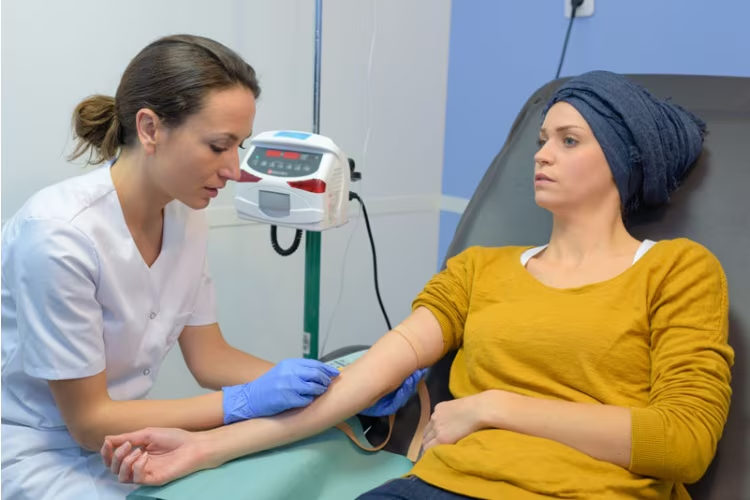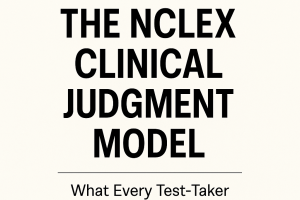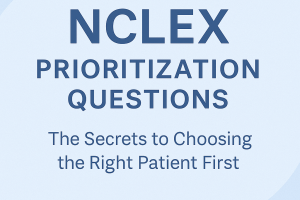Comprehensive Care for a Client with Cancer: An NCLEX-Standard Guide

Cancer is a complex and multifaceted disease that requires a comprehensive approach to care. Nurses play a vital role in supporting clients through diagnosis, treatment, and recovery. This guide adheres to NCLEX standards and covers essential aspects of managing a client with cancer, including assessment, treatment options, nursing interventions, and psychosocial support.
Understanding Cancer
Cancer is characterized by the uncontrolled growth and spread of abnormal cells. There are over 100 types of cancer, each with unique features, but they generally fall into categories such as carcinomas, sarcomas, leukemias, lymphomas, and central nervous system cancers.
Common Symptoms of Cancer
Symptoms vary depending on the type and stage of cancer but may include:
- Unexplained weight loss
- Fatigue
- Persistent pain
- Changes in skin appearance
- Unusual bleeding or discharge
- Persistent cough or hoarseness
- Lumps or masses
Diagnosis and Staging
Diagnostic Tests
- Imaging: X-rays, CT scans, MRIs, and PET scans to visualize tumors.
- Biopsy: Removal of tissue for microscopic examination.
- Laboratory Tests: Blood tests, including tumor markers.
- Endoscopy: Internal visualization of organs.
Staging
- Stage 0: Carcinoma in situ (early-stage cancer).
- Stage I-III: Higher numbers indicate larger tumor size and/or spread to nearby tissues or lymph nodes.
- Stage IV: Cancer has spread to distant parts of the body (metastasis).
Treatment Options
Surgery
- Purpose: Remove the tumor or reduce its size.
- Types: Curative, palliative, reconstructive, and preventive surgeries.
Radiation Therapy
- Purpose: Destroy cancer cells using high-energy radiation.
- Types: External beam radiation and internal radiation (brachytherapy).
Chemotherapy
- Purpose: Use of drugs to kill cancer cells or stop their growth.
- Administration: Intravenous, oral, or intrathecal.
Immunotherapy
- Purpose: Boost the body’s immune system to fight cancer.
- Types: Monoclonal antibodies, immune checkpoint inhibitors, and cancer vaccines.
Targeted Therapy
- Purpose: Target specific molecules involved in cancer cell growth.
- Types: Small molecule inhibitors and monoclonal antibodies.
Nursing Care and Considerations
1. Comprehensive Assessment
- History Taking: Obtain a detailed medical history, including family history, previous treatments, and current symptoms.
- Physical Examination: Thorough examination to identify signs of cancer and its effects.
2. Symptom Management
- Pain Control: Regularly assess pain using standardized pain scales and administer analgesics as prescribed.
- Nausea and Vomiting: Administer antiemetics and provide dietary recommendations to manage chemotherapy-induced nausea.
- Fatigue: Encourage rest periods and energy conservation techniques.
3. Patient Education
- Treatment Plan: Explain the treatment options, potential side effects, and expected outcomes.
- Self-Care: Educate on proper nutrition, hydration, and infection prevention.
- Medication Adherence: Emphasize the importance of following the prescribed medication regimen.
4. Psychosocial Support
- Emotional Support: Provide a supportive environment and refer to counseling services if needed.
- Support Groups: Encourage participation in support groups for emotional and psychological support.
- Family Involvement: Involve family members in care planning and provide them with resources.
5. Monitoring and Follow-Up
- Regular Monitoring: Monitor for treatment side effects, signs of infection, and changes in condition.
- Follow-Up Appointments: Ensure the client attends regular follow-up appointments for ongoing assessment and treatment adjustments.
Case Study: Managing a Client with Breast Cancer
Background
Ms. Davis, a 45-year-old woman, is diagnosed with stage II breast cancer. She presents with a palpable lump in her left breast and has a family history of breast cancer.
Assessment
- History: Family history of breast cancer, current symptoms, and previous health conditions.
- Physical Exam: Palpation of the breast lump and examination of regional lymph nodes.
- Diagnostic Tests: Mammogram, ultrasound, biopsy confirming malignancy.
Treatment Plan
- Surgery: Lumpectomy to remove the tumor, followed by sentinel lymph node biopsy.
- Radiation Therapy: External beam radiation to eradicate any remaining cancer cells.
- Chemotherapy: Adjuvant chemotherapy to reduce the risk of recurrence.
Nursing Interventions
- Preoperative Care: Educate on surgical procedure, obtain informed consent, and provide emotional support.
- Postoperative Care: Monitor surgical site for signs of infection, manage pain, and encourage early ambulation.
- Radiation Therapy Management: Educate on skin care, manage side effects like fatigue and skin irritation.
- Chemotherapy Support: Administer antiemetics, monitor for side effects, and educate on infection prevention.
Nursing Considerations
1. Pain Management
- Assessment: Regularly assess pain and adjust pain management strategies as needed.
- Interventions: Administer prescribed analgesics, provide non-pharmacological pain relief methods, and educate on pain management techniques.
2. Infection Prevention
- Wound Care: Keep surgical sites clean and dry, and change dressings as prescribed.
- Hand Hygiene: Educate the client and family on proper hand hygiene practices.
3. Nutrition and Hydration
- Dietary Support: Provide dietary recommendations to maintain nutritional status and manage side effects like nausea.
- Hydration: Encourage adequate fluid intake to prevent dehydration.
4. Psychological Support
- Emotional Support: Provide a supportive environment and listen to the client’s concerns.
- Counseling: Refer to counseling services or support groups as needed.
- Family Involvement: Involve family members in care planning and provide them with resources and support.
Conclusion
Comprehensive care for clients with cancer involves a holistic approach that addresses physical, emotional, and psychological needs. Nurses play a crucial role in providing support, education, and interventions to promote optimal outcomes and improve quality of life. By adhering to NCLEX standards, nurses can ensure they are delivering high-quality, evidence-based care to their clients.






